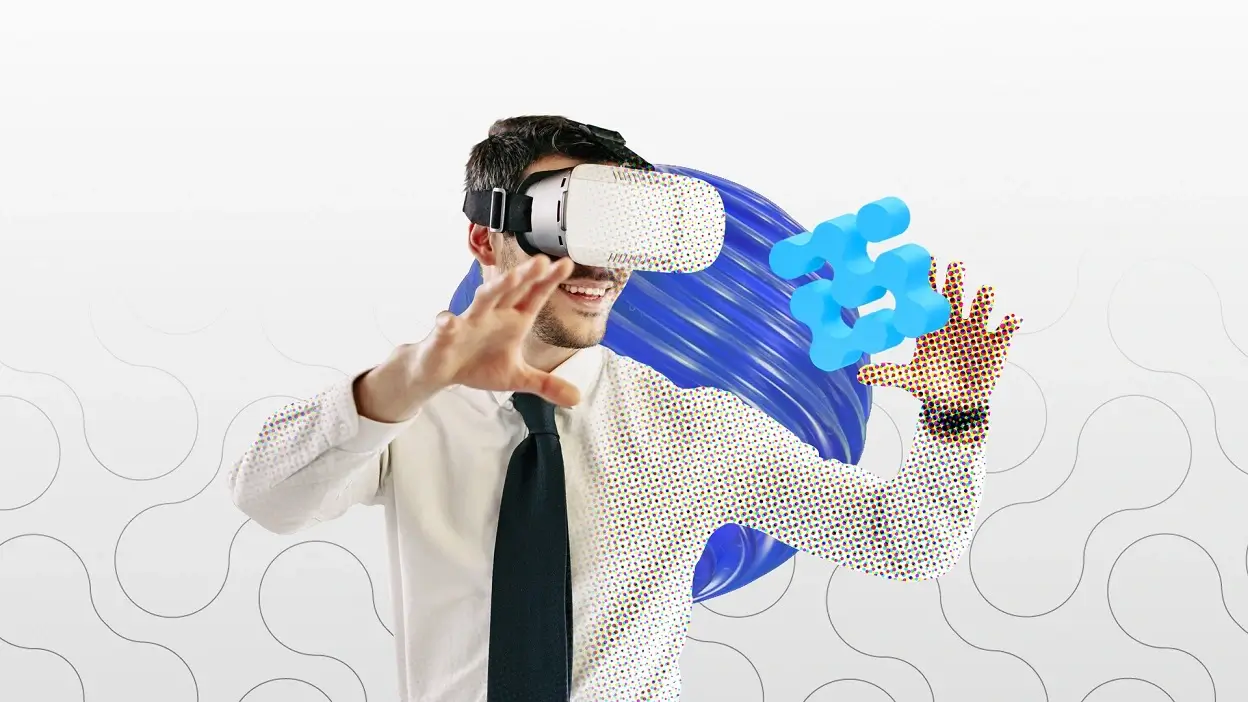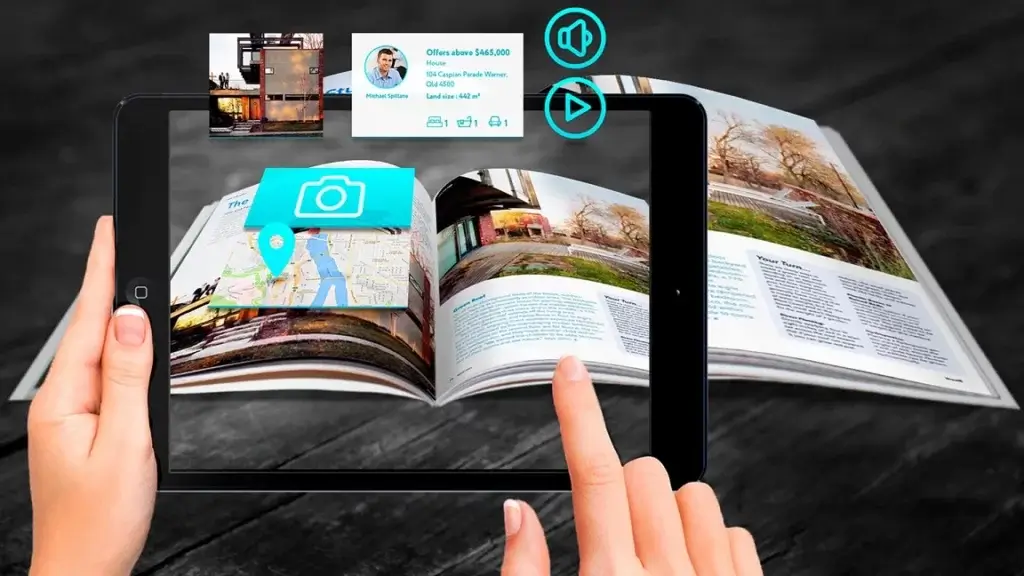
How AR and VR are Transforming the Future of Businesses
- Digital Marketing
- 19 June 2023
A few years ago, you might have considered VR and AR as expensive technologies inaccessible to many businesses. In 2023 and 2024, experts expect the VR and AR market to expand rapidly. It will become more accessible to most businesses and even individual households. Gone are the glitchy, low-resolution graphics and heavy headsets of early VR models. VR and AR developers have created high-quality, streamlined reality technologies that blur the lines between digital images and the real world. Advancements in technology have also made VR and AR equipment more affordable.
Why is this relevant to your company? Brands don’t just use VR and AR for entertainment and games. VR and AR are also powerful business tools, offering unique brand experiences to customers. Keep reading to learn about AR and VR transforming businesses with in-depth, immersive interactions in 2023.
CONTENTS
How AR and VR Are Transforming the Future of Businesses
It may be the first time you’ve heard of AR VR technologies in business. You may wonder about the hype and how it can benefit your brand. VR and AR can significantly help the future of businesses by driving innovation, increasing efficiency, and enhancing customer connections. The virtual world offers excellent opportunities for enhanced product interaction and customer communication. It boosts your brand’s marketing versatility and builds stronger customer relationships.
AR and VR Transforming Businesses: Using Video To Drive Higher Conversion Rates
A survey by Viostream found that videos on landing pages increase conversion rates by 80%. Another Zappar 2018 report found that AR increases conversions by 70%. That’s a lot of conversions! Won’t you want that?
So, attract potential customers with attention-grabbing moving graphics in VR and AR. Use VR and AR videos to make unique brand content that speaks personally to customers. For instance, you could present customers with a first-person VR perspective of your product’s benefits. It could be a car test drive, dining at a restaurant, or a spa experience. You can make a creative and memorable first impression on customers with a VR brand introduction video.
Audiences are more likely to convert after seeing, hearing, and interacting with your products and services. Research also proves that visual and auditory immersion increases human empathy levels by showing them an individual perspective. Subjective and unique interactive experiences appeal to people emotionally, compelling them to take action.
Improving Customer Service And Experience

Virtual reality offers your customers the virtual experience of products. Customers can interact with virtual versions of products and services in real time and try them for free. With VR, product designers won’t have to make physical product samples. Thus, it reduces the production costs.
VR is most beneficial for products and services offered in retail and design. Customers can view retail products overlaid on physical environments with augmented reality (AR). They can try new product launches in an AR environment without needing to buy it. Or, they can experiment with different design variations without changing their environment physically. Your customers will appreciate AR technology as they can try the actual-scale product or service for free.
Product designers can also gather live customer feedback from VR tests and modify the products accordingly. For instance, during a VR product demo, product designers can monitor real-time user reactions and identify any new issues. They can resolve these problems when designing an improved version of the product. They’ll also be able to respond faster to your customer’s needs with data gathered from a virtual environment. VR makes your product design and development process more efficient. VR also increases meaningful interaction between customers and your business and makes customers feel more positive about your brand.
Furthermore, you can use VR technology to personalize customer service channels. Traditionally, customers could call the service hotline for help. How about making a VR environment for customers to chat with an avatar of your customer service officer? Even though it’s virtual, the sight and sound of a person humanizes your brand and personalizes customer service. Your customers will appreciate the added sincerity in your communication.
Marketing Across Different Social Media Platforms

You might already use Instagram and Facebook for your current marketing strategy. But with VR and AR, you can expand your brand’s content reach to appeal to younger potential customers. A 2022 study by Harris Poll found that 38% of Gen Z Americans had not used AR before but were interested in trying it. AR and VR are transforming the future of businesses by widening their content reach scope.
Younger audiences are more willing to experiment with VR and AR content on social media platforms. Younger audiences also enjoy visual video content, so use VR and AR to appeal to their preferences. Create VR and AR brand content with high-quality graphics and sound to immerse them in the experience.
For instance, people widely use TikTok AR filters as trendy visual effects. Experiment with custom-made product filters representing your brand and avail them on TikTok for customers to use. Or, create VR content in the Metaverse and introduce your brand to the Metaverse virtual community. With VR and AR, you can reach a bigger audience of potential customers across different platforms.
AR and VR Transforming Businesses: Becoming A Convenient Substitute For Physical Interaction

The popularity of the Metaverse shows that consumers are excited by advancements in online digital interaction. AR and VR are transforming the future of businesses by enabling in-depth remote communication between customers and brands.
VR technology has good potential to substitute in-person meetings. You can host online work discussions with colleagues’ avatars in a virtual meeting room. Or, you could use VR simulations to train staff in remote locations, saving them the trouble of traveling. VR environments can improve communication between colleagues if many of your team members work from home.
A virtual environment is also an excellent alternative for customer Facebook groups. You could host a virtual public lobby for customers to discuss your products with fellow customers. It’s an ideal platform for customers from different locations to gather and interact with your brand.
AR and VR Transforming Businesses By Elevating Virtual And Offline Events
The pandemic familiarized many of us with the routine and convenience of online meetings. Indeed, virtual company events save space and physical resources, and you can invite more people.
But hosting events over video call can sometimes feel passive and dull. VR and AR technologies can greatly enhance your online events; your audiences won’t need to watch through a screen. They can enter a 3D interactive virtual event environment with a VR headset. It’s an exclusive, personal and hence memorable way to experience a subject. Usage of VR and AR isn’t only restricted to online events. You can also use AR during offline events to impress your audience. Set up live AR presentations during an offline event for commemorative footage, like a digital cake-cutting or tree-planting ceremony.
AR and VR Improving Business’s Training And Education

VR and AR can benefit employees too. Research has shown that VR and AR can improve information retention by 25% as compared to traditional learning methods. It is a unique and efficient way of learning, revolutionizing businesses’ staff training programs. You can even use VR and AR for customer product training events.
VR and AR headsets help students immerse themselves in training environments that simulate real-world situations. They can interact with the product or virtual environment instead of reading about it from hardcopy learning materials. VR exposes employees to a safe and realistic learning environment and better prepares them for the actual event.
Virtual training worlds are most useful for high-risk tasks that require extensive hands-on work. Some examples are emergency response services, medical emergencies, and repair operations.
Using digital learning materials and virtual worlds also reduces the cost of physical learning materials. Learning becomes more accessible to all employees with online or digital information, and you can conduct training remotely. Use VR and AR to transform mobile learning for your employees and save on your business’s training costs.
The future of VR and AR for business is very promising. You’ve learned how AR and VR are transforming the future of businesses and taking brand experiences to greater heights. You can deepen connections with your customers, improve staff training programs, and revitalize brand content. You’ll gain an edge over competitors by adopting VR and AR technology early, so don’t hesitate!
recommended

3 Benefits of Marketing Automation Events
- Digital Marketing
- 24 April 2024


Build Your Digital Presence for Free using Instagram Marketing
- Branding
- 19 September 2023

7 Ways to Diversify Your Social Media Content
- Digital Marketing
- 07 September 2023




 Branding
Branding Digital Strategy
Digital Strategy PR & Communications
PR & Communications